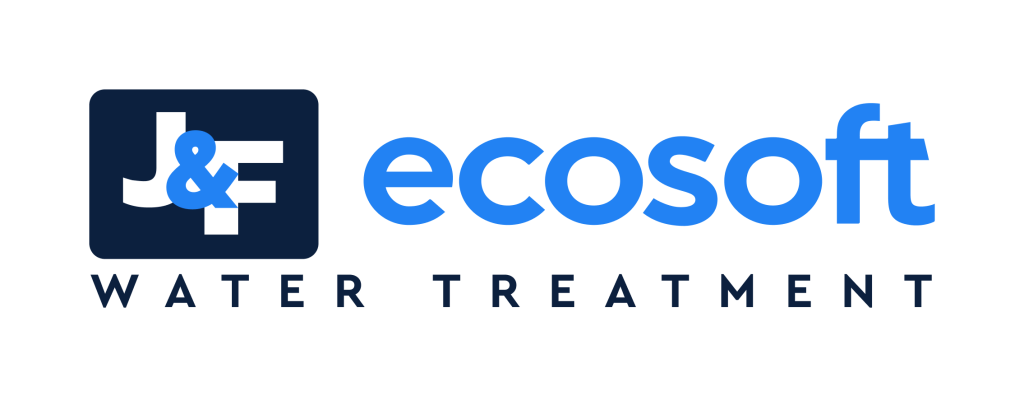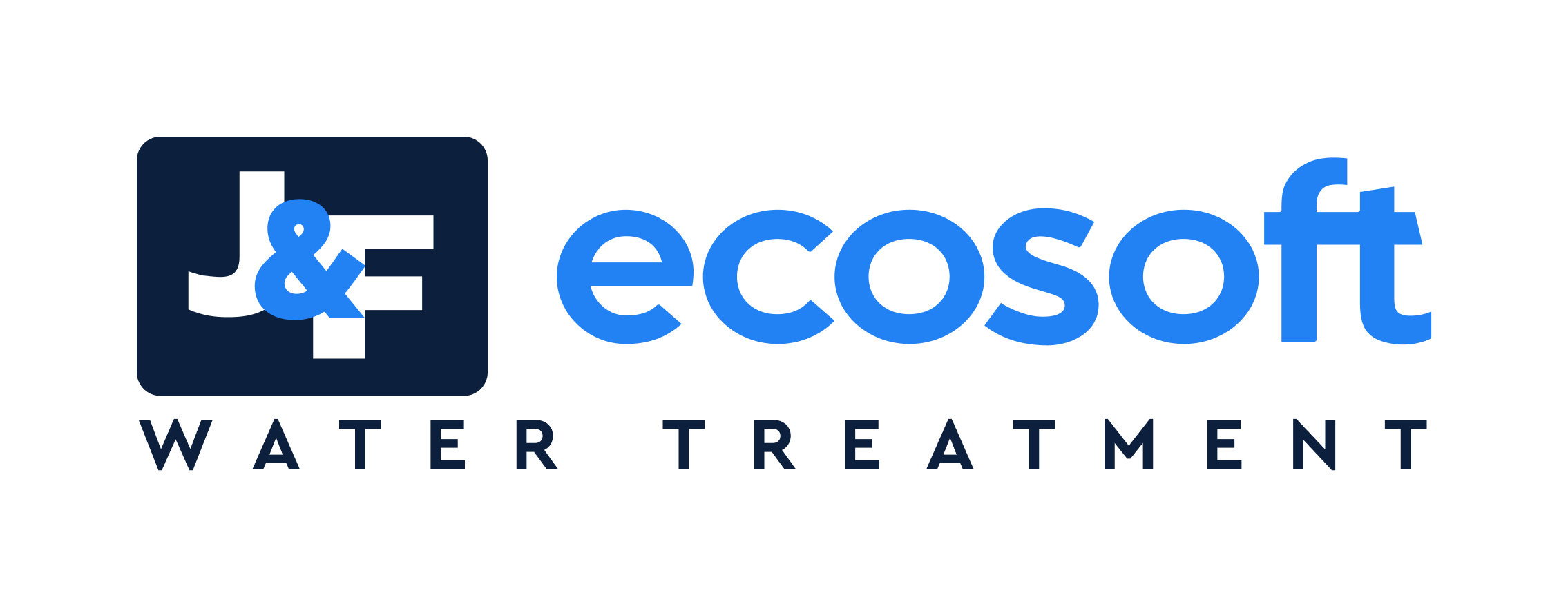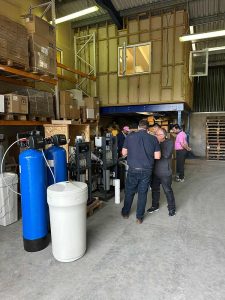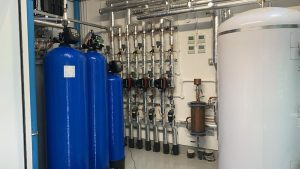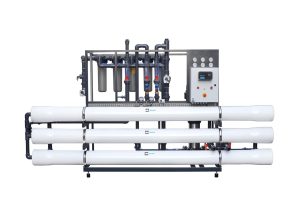INITIAL ANALYSIS
Reverse Osmosis Water Treatment Solution
The two biggest reasons people need water treatment are to make it safe for consumption and to protect important, often expensive equipment. In this case, a water engineering company came to us requiring a solution for a client who produces herbs and soft fruits based in southern UK. They wanted help with the hardness of their mains water, but as the same water would be used on their produce, it needed to be safe for consumption as well. As this client is dealing with food, we wanted to supply the best tailored solution.
And we came up with a pretty good one…
What We Recommend
Duplex 10 x 54 Softener
Commercial MO36000 RO (Reverse Osmosis System)
Blackcomb UV System
20 micron Sediment Filter
5 micron Sediment Filter
Carbon Filters
THE SOLUTION
At the front of the system, a 20 micron sediment filter deals with removing any large contaminants in the water supply such as dirt, sand and organic matter. As the water will then be heading through the water softener, it’s best to remove these larger contaminants so the softener can concentrate on the water hardness.
Water hardness is the most common issue we tackle, especially for customers in the UK and Ireland. The south of England is a particularly bad spot for water hardness which is exactly where this client is based. We therefore supplied them with a 10 x 54 duplex water softener to deal with this issue.
The client needed to deal with the water hardness for a couple of reasons. Firstly, the irrigation system for the herbs and fruit produces a fine spray and limescale would, over time, block the outlets and pipes of the equipment. This would obviously affect their yield. The duplex water softener eliminates this issue and makes softened water available 24/7, alternating the water flow to each tank whenever the other requires maintenance or regeneration. This doesn’t interrupt production so no time is lost and the irrigation system can operate continuously.
Secondly, the best water for growing anything is pure H2O, meaning you ideally want nothing else in it. Whereas the water softener would eliminate calcium carbonate and magnesium carbonate from the water, it does this via a process called ion exchange, where it essentially switches out calcium and magnesium ions for sodium ions. Although in most instances this is rarely a factor, in the case of irrigation for food products, you want to get that sodium back out of the water. Not only that, but you need to remove any other particulates that may still remain in the water. The best way to do that is with a Reverse Osmosis system.
The Reverse Osmosis System we provided is the MO36000, which is an RO producing 36,000 litres per day (or 1.5m3 of water per hour). It is an eco-friendly and highly reliable method for removing up to 99.8% of impurities from your water. The reason the water softener is placed before the RO is so that the water softener protects the RO membranes from fouling due to limescale build-up. The entire system works in cooperation to remove everything from the water supply and provide a steady, constant flow of pure water. Just what the client requires!
It may seem counterintuitive at first glance, but next in the system is another sediment filter. This is a 5 micron sediment filter, which is capable of getting out much smaller contaminants in the water than the 20 micron sediment filter at the front of the water treatment system. The water has just gone through a reverse osmosis system which, as we’ve just stated, is capable of removing 99.8% of impurities from the water supply. Why then, do we need a 5 micron sediment filter?
Simply put, it’s because you can never be too careful when it comes to bacteria and viruses, especially when you’re talking about food production. The 5 micron sediment filter sits just before a UV disinfection system, which eliminates bacteria, viruses and other such harmful organisms. Although it is almost certain that the RO will have removed all the other particulates from the water supply, a 5 micron sediment filter is there as “backup” to ensure anything that may have slipped through is definitely caught before reaching the UV. This is to prevent shadowing, which is when solid particles that are present in the water essentially “block” the UV light from reaching a bacteria or viral organism. You definitely don’t want that when the water is going to be coming into contact with food products, so it’s better to be safe than sorry. 99% of the time, the reverse osmosis system will easily deal with all these particles present in the water, but the sediment filter is there to make up that extra 1%.
Blackcomb Water TreatmentA Blackcomb UV system is installed when there is a possibility of pathogenic bacteria, which is a bacteria that causes disease. That is not at all common or likely to be a problem on mains supplied UK water. However, there is a slim chance of some non-disease-causing bacteria – called heterotrophic bacteria – which can be harmful to the healthy growth of vegetables and fruit. That is why the Blackcomb UV system is there. To deal with the slimmest chance of disease-causing bacteria and to kill any other potential heterotrophic bacteria which may find its way into the water supply.
THE RESULT
The result is as close to pure water as you can get. Sediment, water hardness and bacteria are all eliminated from the water system step-by-step, providing clean, safe water that protects the irrigation equipment and can be used for growing herbs & soft fruit. Maintenance of the system is minimal and simple and for the most part, simply replacing membranes, filters and the UV bulb as and when required.
If you have any issues with your water supply, or you are a contractor, engineer or installer of water treatment products, then we have a wide range of solutions available. Don’t hesitate to get in contact. We can provide an effective, tailored solution designed to treat any specific water treatment needs.
UK Office Enquiries or call us on 01538 399048
Ireland Office Enquiries or call us on 067 34222
